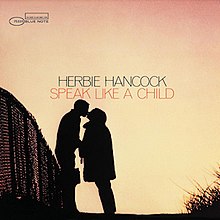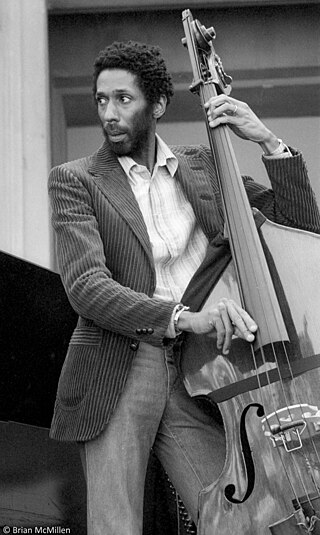
Ronald Levin Carter is an American jazz double bassist. His appearances on 2,221 recording sessions make him the most-recorded jazz bassist in history. He has won three Grammy Awards, and is also a cellist who has recorded numerous times on that instrument. In addition to a solo career of more than 60 years, Carter is well-known for playing on numerous iconic Blue Note albums in the 1960s, as well as being the anchor of trumpeter Miles Davis's "Second Great Quintet" from 1963-1968.

Herbert Jeffrey Hancock is an American jazz musician, bandleader, and composer. Hancock started his career with trumpeter Donald Byrd's group. He shortly thereafter joined the Miles Davis Quintet, where he helped to redefine the role of a jazz rhythm section and was one of the primary architects of the post-bop sound. In the 1970s, Hancock experimented with jazz fusion, funk, and electro styles, using a wide array of synthesizers and electronics. It was during this period that he released perhaps his best-known and most influential album, Head Hunters.
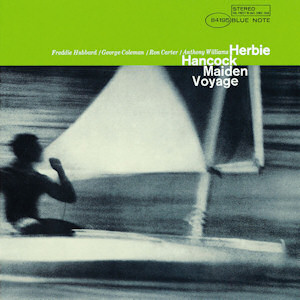
Maiden Voyage is the fifth album led by jazz musician Herbie Hancock, and was recorded by Rudy Van Gelder on March 17, 1965, for Blue Note Records. It was issued as BLP 4195 and BST 84195. Featuring Hancock with tenor saxophonist George Coleman, trumpeter Freddie Hubbard, bassist Ron Carter and drummer Tony Williams, it is a concept album aimed at creating an oceanic atmosphere. As such, many of the track titles refer to marine biology or the sea, and the musicians develop the concept through their use of space. The album was presented with the Grammy Hall of Fame Award in 1999.

Miles Smiles is an album by the jazz musician Miles Davis. It was released on February 16, 1967 through Columbia Records. It was recorded by Davis and his second quintet at Columbia 30th Street Studio in New York City on October 24 and October 25, 1966. It is the second of six albums recorded by Davis' second great quintet, which featured tenor saxophonist Wayne Shorter, pianist Herbie Hancock, bassist Ron Carter, and drummer Tony Williams.
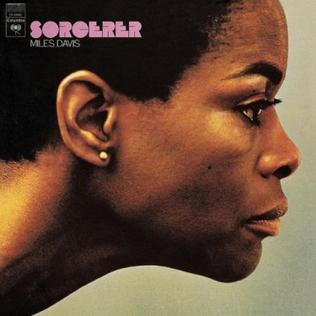
Sorcerer is an album by the jazz trumpeter and composer Miles Davis. It is the third of six albums that his 1960s quintet recorded. It also includes one track from a 1962 session with vocalist Bob Dorough, which was the first time Wayne Shorter recorded with Davis. Davis does not play on the second track, "Pee Wee". The album's cover is a profile photo of actress Cicely Tyson, who at the time was Davis's girlfriend.

Nefertiti is a studio album by the jazz musician Miles Davis, released in March 1968. Recorded at Columbia's 30th Street Studio over four dates between June 7 and July 19, 1967, the album was Davis' last fully acoustic album. Davis himself did not contribute any compositions – three were written by tenor saxophonist Wayne Shorter, two by pianist Herbie Hancock, and one by drummer Tony Williams.
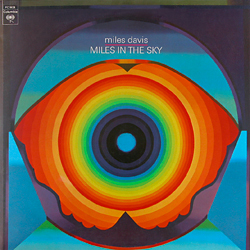
Miles in the Sky is a studio album by the jazz trumpeter and composer Miles Davis. It was released on July 22, 1968 through Columbia Records. It was the last full album recorded by Davis' "Second Great Quintet" and marked the beginning of his foray into jazz fusion, with Herbie Hancock playing electric piano and Ron Carter playing electric bass guitar on opening track “Stuff”. Additionally, electric guitarist George Benson features on “Paraphernalia”.

Components is an album by jazz vibraphonist Bobby Hutcherson, released on the Blue Note label in 1966. The first side of the LP features compositions by Hutcherson, in a hard bop style, whilst the second side features Joe Chambers' compositions, more in the avant-garde style.

Empyrean Isles is the fourth studio album by American jazz pianist Herbie Hancock, released on Blue Note Records in November 1964. The album features Hancock alongside trumpeter Freddie Hubbard, bassist Ron Carter, and drummer Tony Williams.

Quartet is the twenty-seventh album by jazz pianist Herbie Hancock, featuring a quartet with trumpeter Wynton Marsalis, bassist Ron Carter and drummer Tony Williams. It was originally issued in Japan on CBS/Sony, and later given a US release by Columbia.
Post-bop is a jazz term with several possible definitions and usages. It has been variously defined as a musical period, a musical genre, a musical style, and a body of music, sometimes in different chronological periods, depending on the writer. Musicologist Barry Kernfeld wrote in The New Grove Dictionary of Music and Musicians that post-bop is "a vague term, used either stylistically or chronologically to describe any continuation or amalgamation of bop, modal jazz, and free jazz; its meaning sometimes extends into swing and earlier styles or into fusion and third-world styles."

Charles Anthony "Buster" Williams is an American jazz bassist. Williams is known for his membership in pianist Herbie Hancock's early 1970s group, as well as working with guitarist Larry Coryell, the Thelonious Monk repertory band Sphere and as the accompanist of choice for many singers, including Nancy Wilson.

My Funny Valentine: Miles Davis in Concert is a live album by Miles Davis recorded at the Philharmonic Hall of Lincoln Center, New York City on February 12, 1964 and released on Columbia the following year.

The All Seeing Eye is the ninth jazz album by saxophonist Wayne Shorter, recorded on October 15, 1965, and released on the Blue Note label as BLP 4219 and BST 84219 in 1966. The album features performances by Shorter with trumpeter Freddie Hubbard, trombonist Grachan Moncur III, alto saxophonist James Spaulding, pianist Herbie Hancock, bassist Ron Carter and drummer Joe Chambers. Shorter's brother, Alan composed and plays fluegelhorn on the final track, “Mephistopheles”. The AllMusic review by Scott Yanow states: "it is clear from the start that the music on this CD reissue is not basic bop and blues... the dramatic selections, and their brand of controlled freedom has plenty of subtle surprises. This is stimulating music that still sounds fresh over three decades later".
Jerry Dodgion was an American jazz saxophonist and flautist.

The Procrastinator is an album by jazz trumpeter Lee Morgan released posthumously on the Blue Note label, featuring performances by Morgan, Wayne Shorter, Bobby Hutcherson, Herbie Hancock, Ron Carter and Billy Higgins. It was originally issued in 1978 as a double LP featuring tracks recorded in three different sessions: July 1967, September 1969 and October 1969. It was the last time Morgan recorded with Shorter in an association that lasted almost eight years.

Now's the Time is a 1964 album by jazz saxophonist Sonny Rollins, released by RCA Victor featuring performances by Rollins with Herbie Hancock, Thad Jones, Ron Carter, Bob Cranshaw and Roy McCurdy on several bebop tunes.

"Maiden Voyage" is a jazz composition by Herbie Hancock from his 1965 album Maiden Voyage. It features Hancock's quartet – trumpeter Freddie Hubbard, bassist Ron Carter and drummer Tony Williams – together with saxophonist George Coleman. It is one of Hancock's best-known compositions and has become a jazz standard.

Directions is a compilation album by American jazz musician Miles Davis, released in 1981 by Columbia Records. It collects previously unreleased outtakes that Davis recorded between 1960 and 1970. Directions was the last of a series of compilation albums—mostly consisting of, at that time, previously unreleased music—that Columbia released to bridge Davis' recording hiatus that ended with the Man with the Horn in July 1981.
